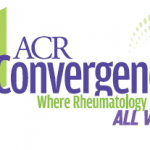 Updates from the ACR Convergence 2023 Review Course, part 3
Updates from the ACR Convergence 2023 Review Course, part 3
SAN DIEGO—The one-day Review Course, held before ACR Convergence 2023 officially kicked off on on Saturday, Nov. 11, covered a plethora of important topics under the leadership of moderators Noelle Rolle, MBBS, assistant professor in the Division of Rheumatology, associate program director of the Rheumatology Fellowship at the Medical College of Georgia, Augusta University, and Julia Schwartzmann-Morris, MD, associate professor, Donald and Barbara Zucker School of Medicine at Hofstra/Northwell, Great Neck, N.Y.
Thrombotic Microangiopathies

Dr. Thomas Ortel
Thomas Ortel, MD, PhD, chief, Division of Hematology, Department of Medicine, Duke University School of Medicine, Durham, N.C., discussed thrombotic microangiopathies (TMA). TMA is a group of clinical syndromes defined by the presence of hemolytic anemia, thrombocytopenia and organ damage that results from endothelial damage and microvascular occlusion.
TMAs are relevant to rheumatologists because systemic lupus erythematosus (SLE), scleroderma renal crisis (SRC) and catastrophic antiphospholipid syndrome (CAPS) can all manifest with TMA. Although these associations clearly exist, the precise pathophysiologic mechanisms that explain why these diseases cause TMA are not entirely clear.1
About TMA
Two primary forms of TMA include thrombotic thrombocytopenic purpura (TTP) and complement-mediated TMA, also known as atypical hemolytic uremic syndrome (aHUS). TTP can be congenital or acquired and results from antibodies directed against ADAMTS13 (a disintegrin and metalloproteinase with a thrombospondin type 1 motif, member 13). aHUS is a rare, hereditary, progressive and life-threatening disorder that results from a disruption in regulation of the alternative complement pathway.
A key point made by Dr. Ortel is that it is essential to identify primary TMAs, such as TTP and aHUS, because targeted therapies for these conditions now exist.
Dr. Ortel also noted that primary TMA can occur with other disorders that sometimes cause a secondary TMA; even in these cases, the primary TMA must be specifically treated.
In explaining the pathogenesis of TTP, Dr. Ortel stated there is systemic deposition of platelet thrombi with abundance of von Willebrand factor (vWF) in the arterioles and capillaries. This can occur when ADAMTS13, which is a vWF protease, is deficient and vWF levels can rise. This explains why low ADAMTS13 activity level is a defining feature of TTP.
Various assays exist to measure ADAMTS13 activity level, but Dr. Ortel noted that many of them take a long time to result, thus clinical decisions may need to be made before these levels return.

